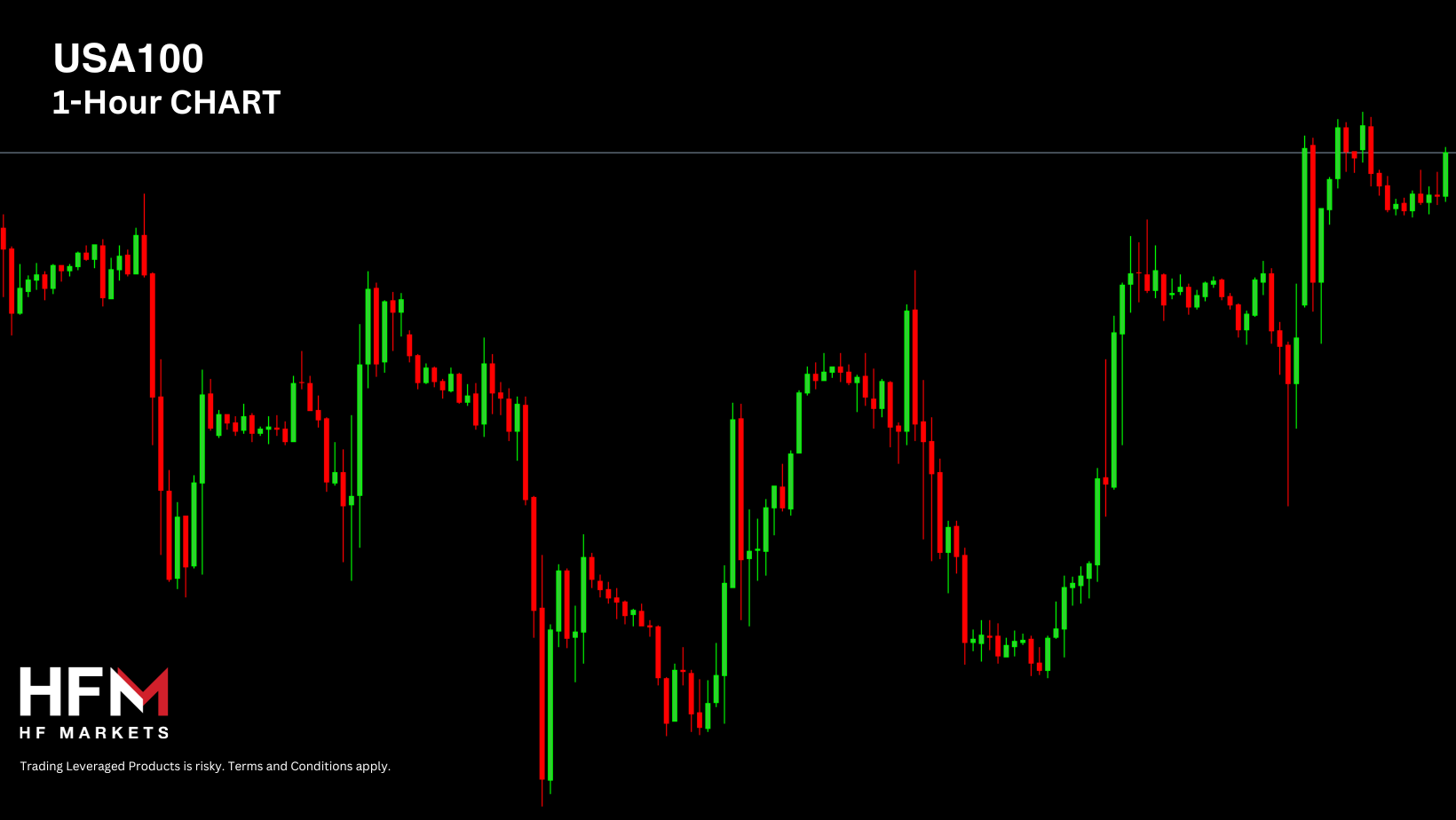December has not failed to surprise investors with the US employment sector outperforming expectations and sending stocks soaring. Additionally, across the Pacific the World’s second largest economy also made public interesting inflation data which is in the spotlight just as much as the US NFP. Both Chinese Consumer and Producer inflation fell below expectations. Consumer prices declined at their fastest pace in more than 3 years. China is now witnessing deflation measuring -0.5% which has not been seen since the banking crisis if we exclude COVID-19.
Last week, Moody’s downgraded China’s credit rating. Moody’s advises the costs of supporting failing local governments, state-owned companies and controlling the property crisis would pressure the economy. But the question is, what does this mean for the US and US Indices?
USA100 – Inflation To Be The Next Price Driver
The USA100 rose during the US trading session by 0.40% on Friday and by the close of day was almost 0.50% higher. The first reaction to the Non-Farm-Payroll data was negative and the instrument fell 0.38% before buyers re-entered the market. During this morning’s Asian session, the index is trading 0.10% lower but is so far forming nothing more than a retracement. Let’s discuss what the employment data means for the index as well as weak Chinese inflation.
The NFP confirms the US has 199,000 more employed individuals compared to the previous month, which is 15,000 higher than expected. However, the main shocks came from the Average Hourly Earnings and the Unemployment Rate. The Unemployment Rate declined from 3.9% to 3.7% which is considerably low considering the restrictive monetary policy. The Hourly Earnings doubled from 0.2% to 0.4%. The employment data has both positives and negatives for the stock market. However, in the past 2 years, higher employment data has meant a poorer stock market, which was not the case on Friday.
The better-than-expected employment data indicates an imbalance within the employment sector which triggered higher wages. These factors can contribute to higher consumer demand, higher investor demand, and a better performing economy. All these factors are positive for the stock market in general. However, there is a negative side also. The positive data has lowered the possibility of a nearer interest rate cut. Previously, market participants predicted a “cut” to come as early as March, but the employment data again points to “higher for longer”. The CME FedWatch Tool now has virtually no possibility of a cut in December, January and February, and now indicates a “pivot” in May 2024.
The question is, is the USA100 overpriced considering the new reality? This is something which will become clearer during Wednesday evening’s Federal Reserve Rate Decision and Press Conference. If the Fed President, Jerome Powell, suddenly becomes more hawkish and pushes a pivot further in the future, stocks can correct. Technical analysts also advise the stock market may fall into a wider price range until further clarity from the Fed.
Technical analysis shows the USA100 trading within a short-term bullish trend, but also at a significant psychological price. The asset has failed to break above this level on the past four attempts as investors fear the asset is trading above its intrinsic price. Therefore, the USA100 will require a stronger price driver. This potentially could come from tomorrow’s Consumer Price Index (inflation rate). If the CPI reads lower than 3.1%, ideally 2.9% or lower, the index could experience another surge in investor demand. However, if inflation reads 3.1% or remains at 3.2%, investors may be discouraged.




















